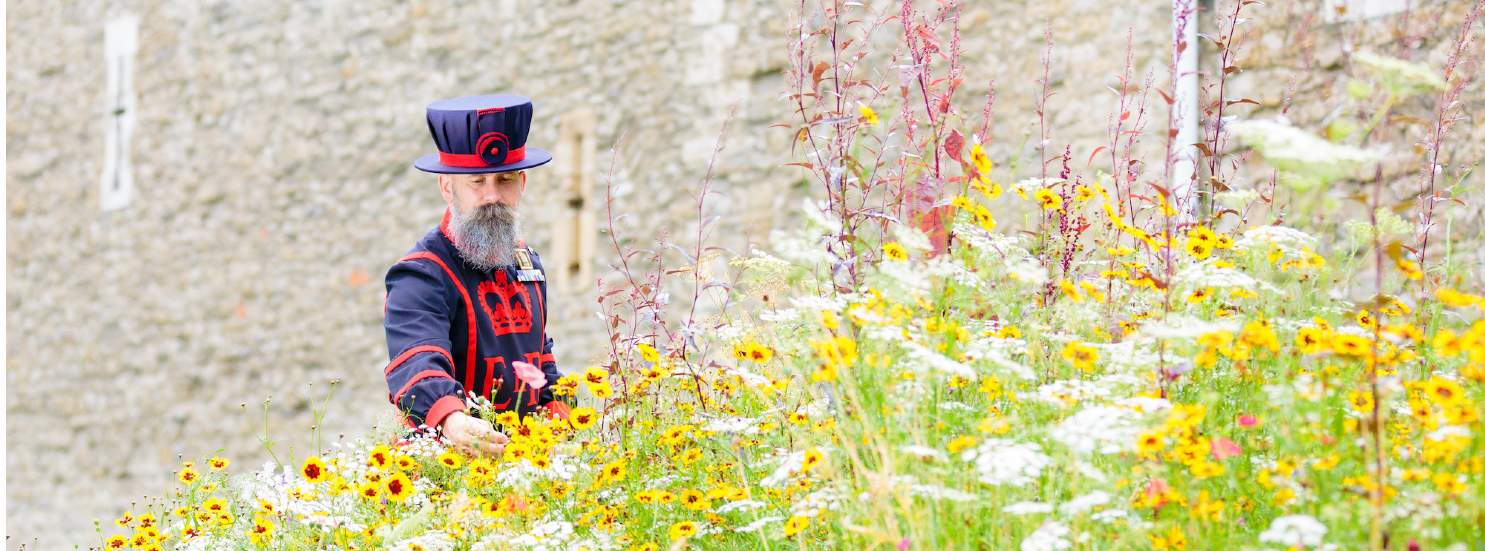Among a number of planned events and celebrations taking place as part of this year’s Platinum Jubilee celebrations, two notable standouts are the Tree of Trees and Superbloom.
Thomas Heatherwick’s Tree of Trees will comprise a grand stepped sculpture, pieced together and bound by 350 varieties of native British tree saplings. It will stand outside Buckingham Palace during the upcoming celebrations and will afterward form part of the ‘Queen’s Green Canopy’ initiative. This will see as many trees planted throughout the Jubilee year as possible. Superbloom, meanwhile, sees the medieval Tower of London moat festooned with 20 million seeds which will flower from 1 June to 18 September.
The impact of the monarchy, and celebrations of monarchy, upon our built heritage and natural environment largely arose as a popular cultural phenomenon during the Victorian period. However, the origins of this are seemingly much older. Even at a simple level, the celebration of a jubilee was always held in an outdoor space for both purposes of spectacle and the aim of attracting as many people as possible. The celebration of Edward III’s Golden Jubilee in 1377 ended with a jousting tournament in Smithfield, and King George III’s 50th anniversary jubilee was held in 1809 in Bachelors Acre, Windsor, ultimately ending in the unveiling of a commemorative monument within the park.
Celebrations of monarchy and horticulture would begin to manifest in popular architecture as early as the 17th century, with examples still surviving today. Following the ‘Glorious Revolution’ of 1688 which saw James II deposed in favour of King William III ‘of Orange’, swathes of orange trees were imported into England by William and Mary. Across the country, but especially so in London, it quickly became fashionable to outfit the gardens of grand houses with orangeries, often long gallery-style buildings, with checkerboard flooring and orange trees lining the length of the windows. The orangeries at Hampton Court and Ham House in Richmond are both examples of this popular culture to celebrate the reign or establishment of a monarch.
During the late 19th and early 20th centuries, a window of time that witnessed the Golden and Diamond Jubilees of Queen Victoria, as well as the Silver Jubilee of George V, celebrations and memorials using the natural environment became much more popular.
Queen Victoria and Prince Albert were great advocates for public parks to promote general welfare among the population, coinciding with Victorian-era ideas of town planning and the desirability of establishing open spaces among peaceful suburbs lined with villas and terraces. The period spawned numerous public parks and a varied range of built and planted features. Examples include the oak tree planted at High Beach in Epping Forest to commemorate Queen Victoria’s visit in 1882, the gates at Leazes Park in Newcastle-upon-Tyne, constructed to celebrate the Diamond Jubilee, and the bandstand donated to Borough Gardens in Dorchester.
Outside the establishment of public parks, people across the country planted vast amounts of woodland, the majority of which survives today, to celebrate and memorialise a royal jubilee. Celebratory parks and gardens would continue to appear throughout the 20th century, often reflecting popular architecture and landscape styles. Examples include Woodhouse Moor Park in Leeds with its specially planted avenue of trees, the Arts-and-Crafts library building in Jubilee Park, Southall and the Jubilee Park in Edmonton, opened in 1939 and defined by its art-deco entry archway.
This concurrent celebration of the natural environment and monarchy is deeply embedded within our architecture and landscape heritage, often as welcome successors to turbulent times, symbolic of a renewed outlook and regeneration. The Tree of Trees and Superbloom epitomise well the continuation of this tradition.
Picture credit: Historic Royal Palaces









.jpg)
.jpg)